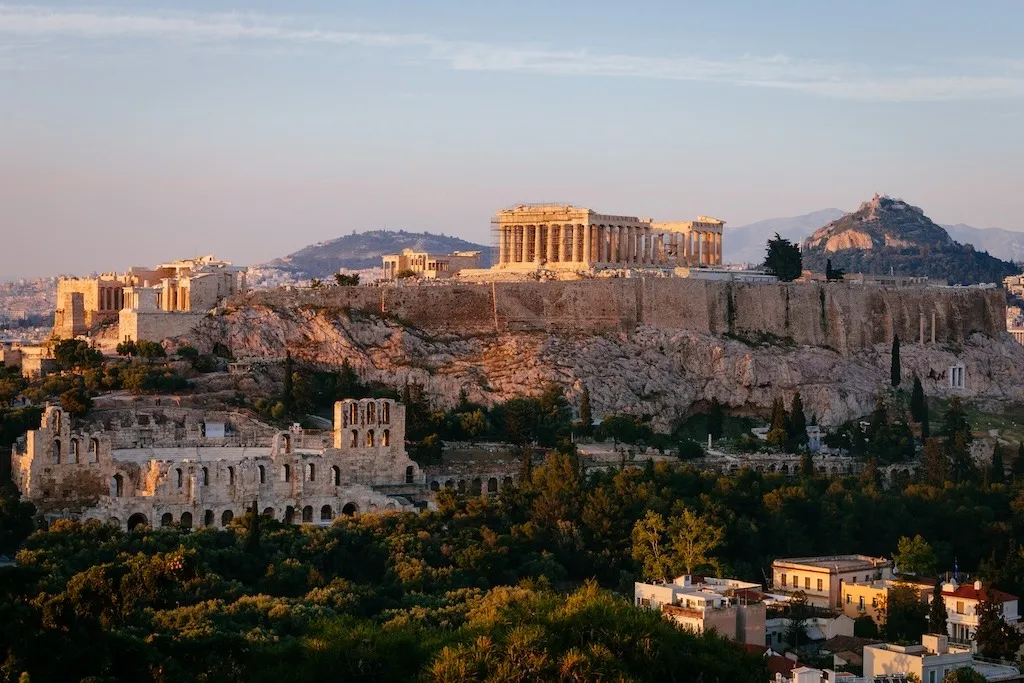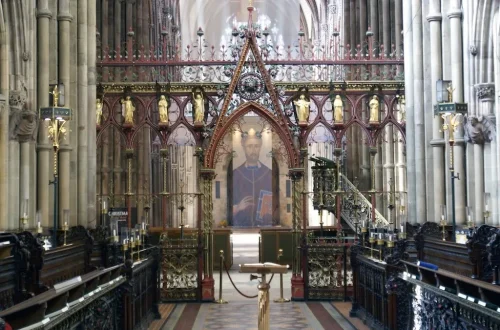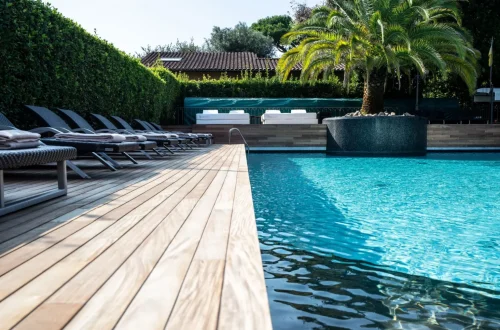Athens can lay claim to being the seat of democracy – it’s the birthplace of modern politics. Its cultural heritage is no less impressive – the philosophers of ancient Greece still hold sway over the world of rational thought. Then there’s the food – simple but oh so tasty. And… it’s also not an expensive city, it’s easy to get around and the locals are definitely friendly.
For all those reasons, and more, I decided it was time revisit a city I’d not seen for around 40 years. What immediately became clear is that I should have come back sooner. Put simply: Athens is the perfect weekend break. And here’s why…
Athens – getting about
Straight after landing I purchased a three-day travel pass, which covers busses, trams and the metro, as well as a return trip to the airport. Once you’ve done that all your travel worries are over – it’s so simple.
Also, despite you probably not speaking a word of Greek, you’ll have no problems with the station names as they’re all spelt out in the Latin alphabet as well as in Greek. There are English announcements, too, and the metro map is dead easy to understand. You’ll be ticket tapping like a local in no time.
The big ticket destinations
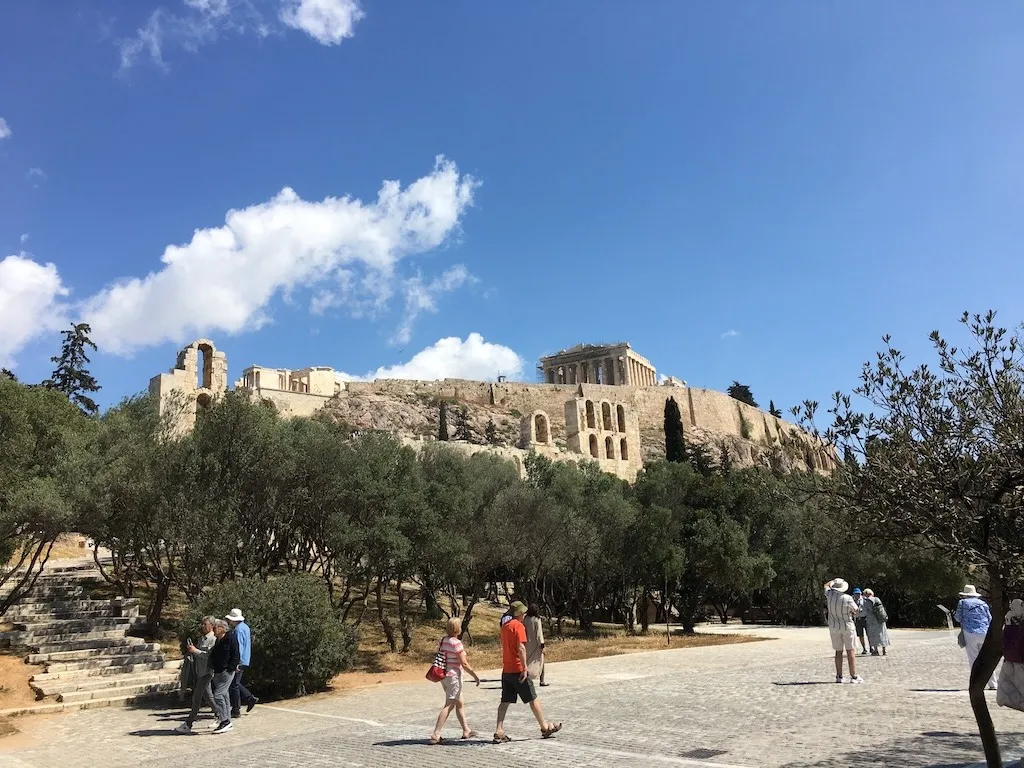
The Acropolis is a popular destination – you’ll doubtless want to pay it a visit during your stay and you’ll also not want to be queuing up for a ticket, especially on a really hot day. So book in advance, turn up 15 minutes before your time slot and stroll straight in. The only obstacles you’ll need to negotiate after that are the large parties of sun-soaked pensioners from cruise ships docked in the harbour, who dander around in herds.
The Unesco World Heritage site is definitely well worth your time. The rocky outcrop was transformed at the end of the fifth century BC into the epicentre of the Greek world. Built at the request of the Athenian statesman Pericles, it was a monument to democracy and the defeat of the Persians. It was also a major religious centre.
Death to the Gigantomachy!
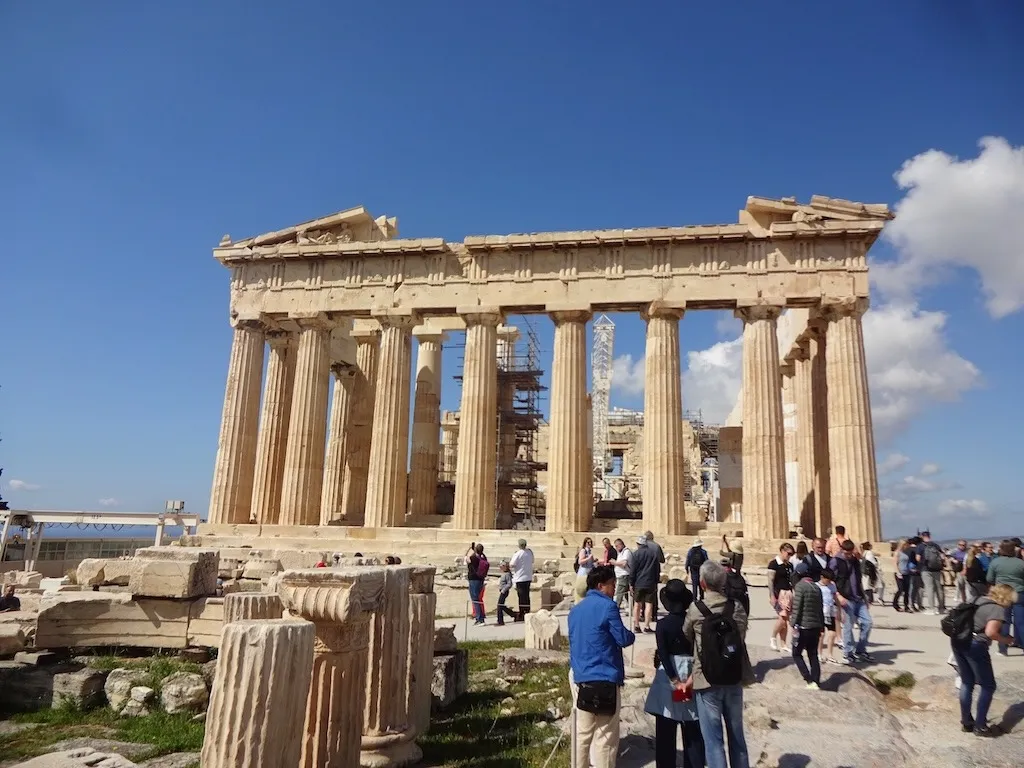
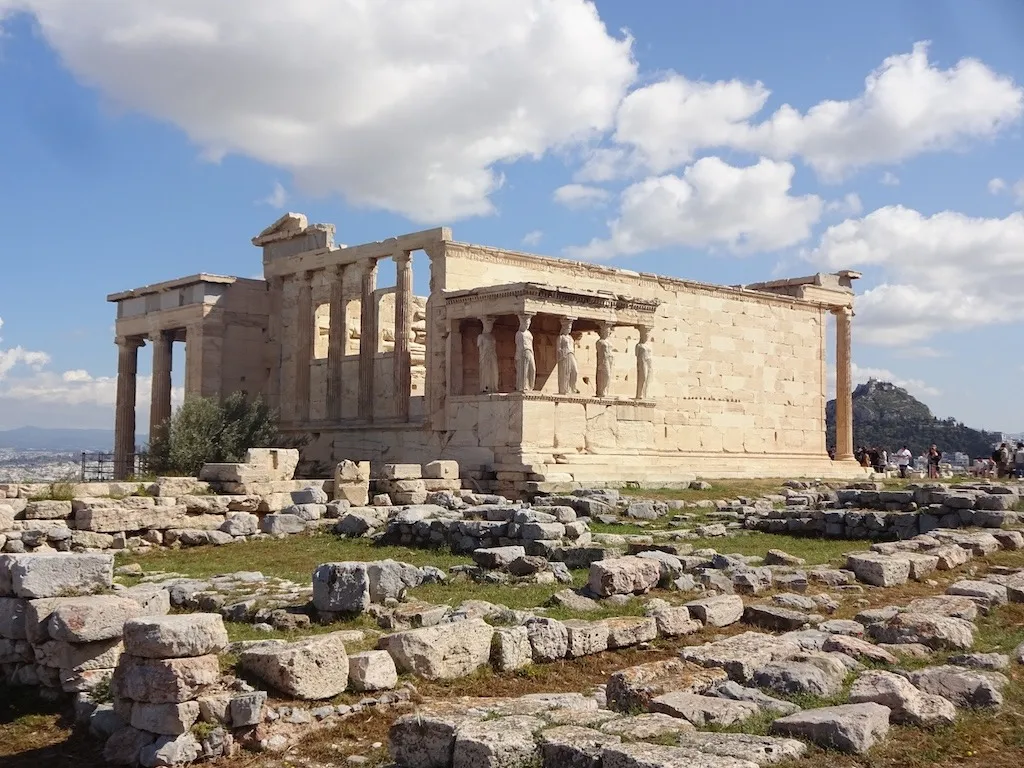
The most important monument on the Acropolis is the Parthenon, the ancient entrance to the Acropolis, although the smaller temple to Athena Nike is also impressive, although the reliefs depicting the victory of the Olympian gods over a race of giants (the Gigantomachy) are long lost. The frieze that once adorned the Parthenon now resides in the British Museum.
There’s a cultural and political debate about this, which can be explored at the Acropolis Museum. Once again, I’d suggest booking in advance as the queues can be long and slow.
The museum is home to more than 4,250 objects, exhibited over an area of 14,000 square metres. Many are impressive; there’s plenty to see so allow for an hour to wander ‘round. Annoyingly, you’re not allowed to take photographs and the policy is quite strictly enforced.
The top level of the museum has the same orientation as the Acropolis and the spacing of the columns in the Parthenon hall is the same as that of the ancient temple. As a result, you get a real sense of just how impressive the building must have looked in its prime. The museum’s café has a great view up to the Acropolis and it’s therefore an ideal spot for a coffee.
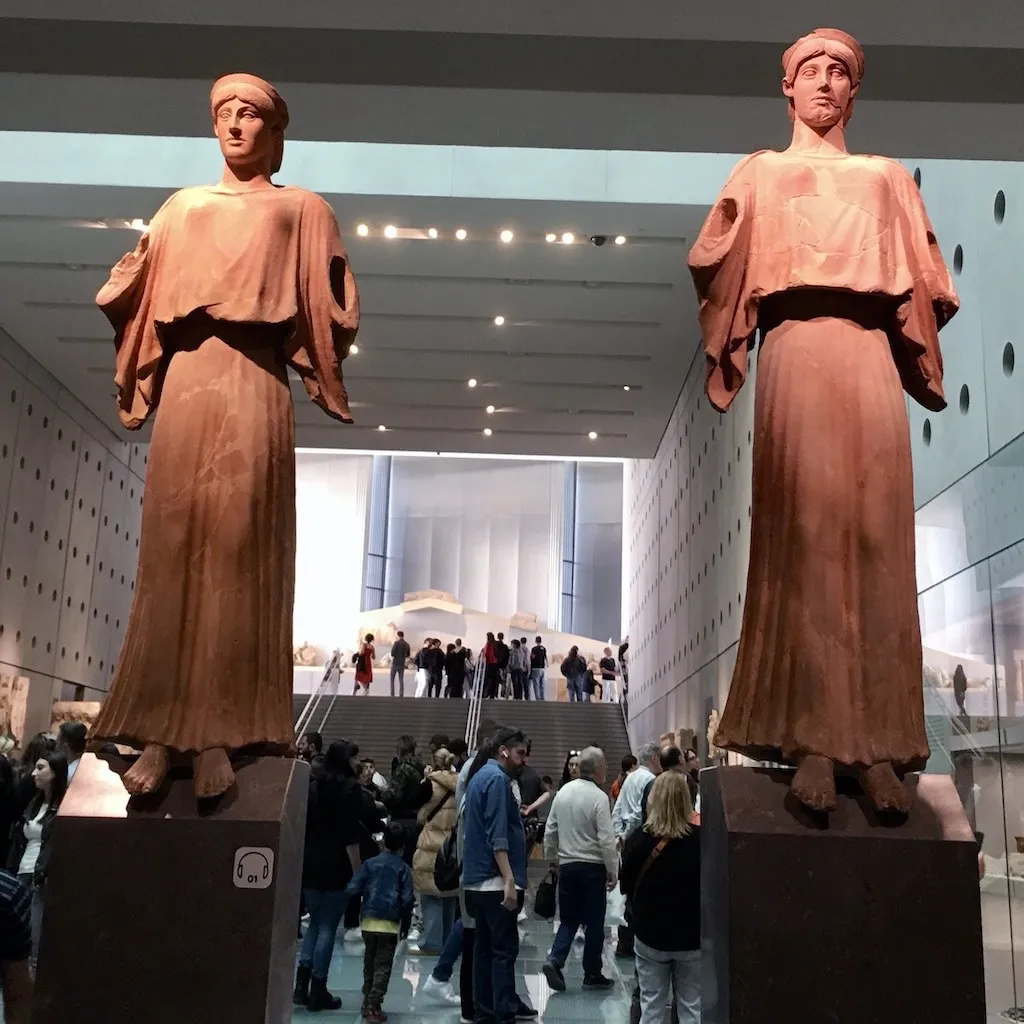
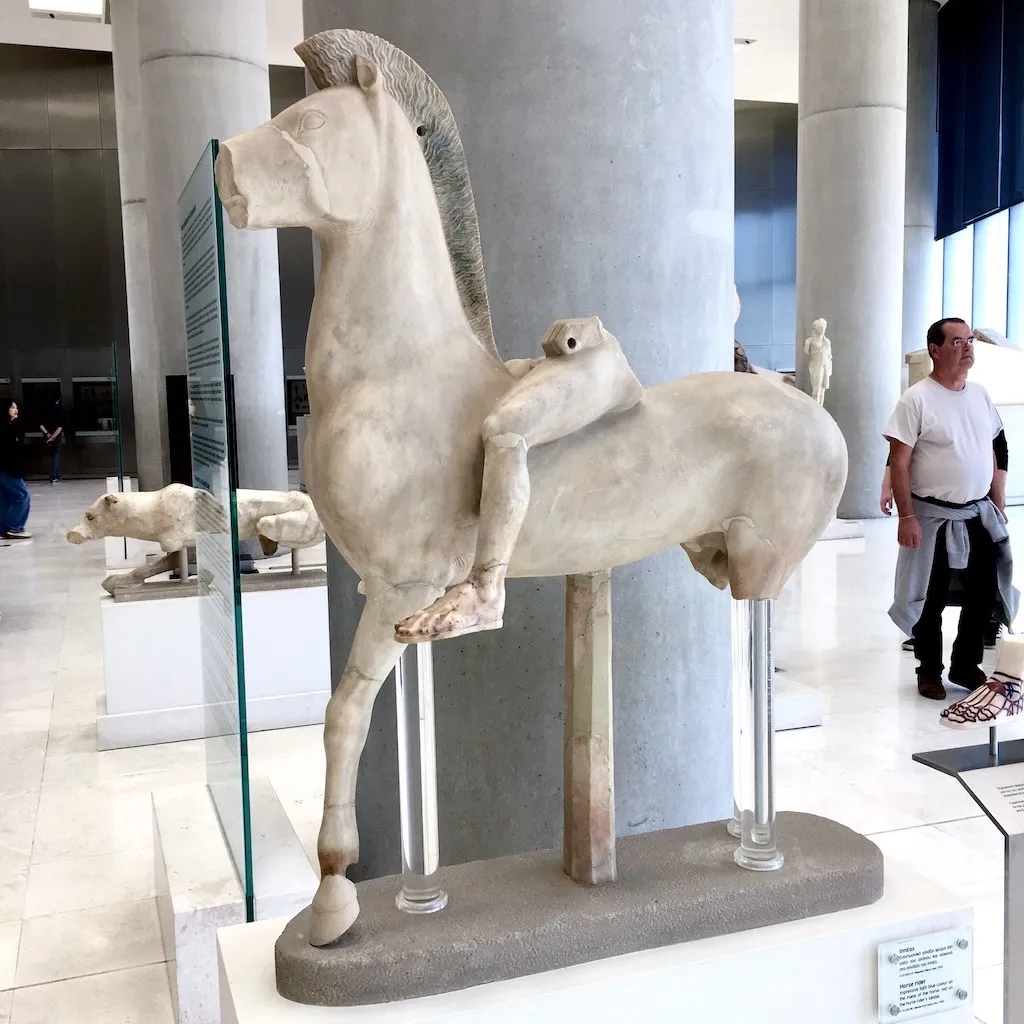
A peek into the future – day trips from Athens
There are lots of day trips available from Athens – I chose to visit Delphi and Arachova with the help of Ammon Express, who I’d booked with before when I was in Thessalonica. We were met slightly out of town, to avoid the worst of the traffic, and headed off towards the seat of famous oracle, located on the slopes of Mount Parnassus.
The oracle was a central figure in ancient Greek religious and political life, consulted for guidance on a wide range of matters. The answers were always gnomic and their interpretation often got heated. One pronouncement accidentally resulted in the death of Socrates!
Interestingly, the oracle (the Pythia) was always a priestess. The women chosen for the post were local and they all seemed to have died within a few years of taking on the role of Apollo’s voice. One theory suggests it might have been the result of volcanic gasses seeping up through the rocks beneath the temple. The ancient historian Plutarch said that the Pythia’s life was shortened by her service to Apollo.
The navel of the world
Whatever’s the case, the great cultural complex is now in ruins, although its theatre and running track – both used in an annual cultural festival – remain largely intact. And the location – the navel of the world (omphalos) – offers splendid views back across the valley below, giving an impression of how the site must have looked in its heyday.
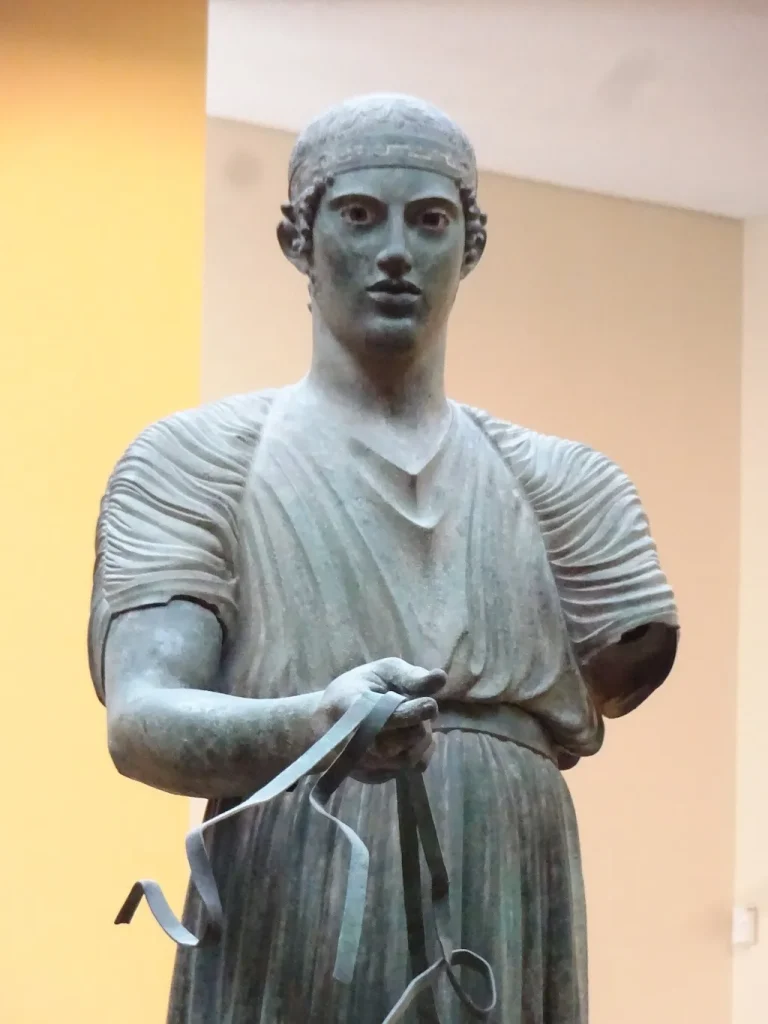
The museum at the site is well worth your time, too. The bronze horseman sculpture is worth the visit, alone. It survived the looting that robbed the site of its valuables by being hidden under a pile of rocks! It is simply stunning.
On our way back we stopped off in Arachova for a couple of hours. It’s a one horse town, albeit with great views, and a reasonable place to have lunch but 90 minutes would have been more than ample. I walked up to the town’s church, which resulted in some seriously sore legs and some slightly better views.
The green heart of Athens

The National Garden is 38 acres of public park in the centre of the Greek capital. It’s home to a family of free running tortoises – yes, really – as well as some chickens and goats, who have their freedom restricted by a high wire fence. The gardens offer a green retreat from the hustle and bustle of the city and during my visit there was an avenue of food stalls. I stopped off and purchased a box of very sticky, sweet pastries, the perfect accompaniment for a leisurely stroll amongst the water features and early blossoms.
Suitably refreshed, I headed over to the National Archaeological Museum – a receptacle of world class wonders. My favourites included the Mask of Agamemnon, a gold burial mask originally associated with the king who attacked Troy. It turns out that was archaeologist hubris – the mask predates the Trojan War by some 400 years.

I was also knocked out by the ‘Jockey of Artemision’, a bronze masterpiece of ancient Greek art. It survived by being on a boat that sank off Cape Artemision around 140 BC – it would otherwise have been melted down in antiquity, in all likelihood – and it quite stunning. The horse and its rider look like a frozen moment in time.
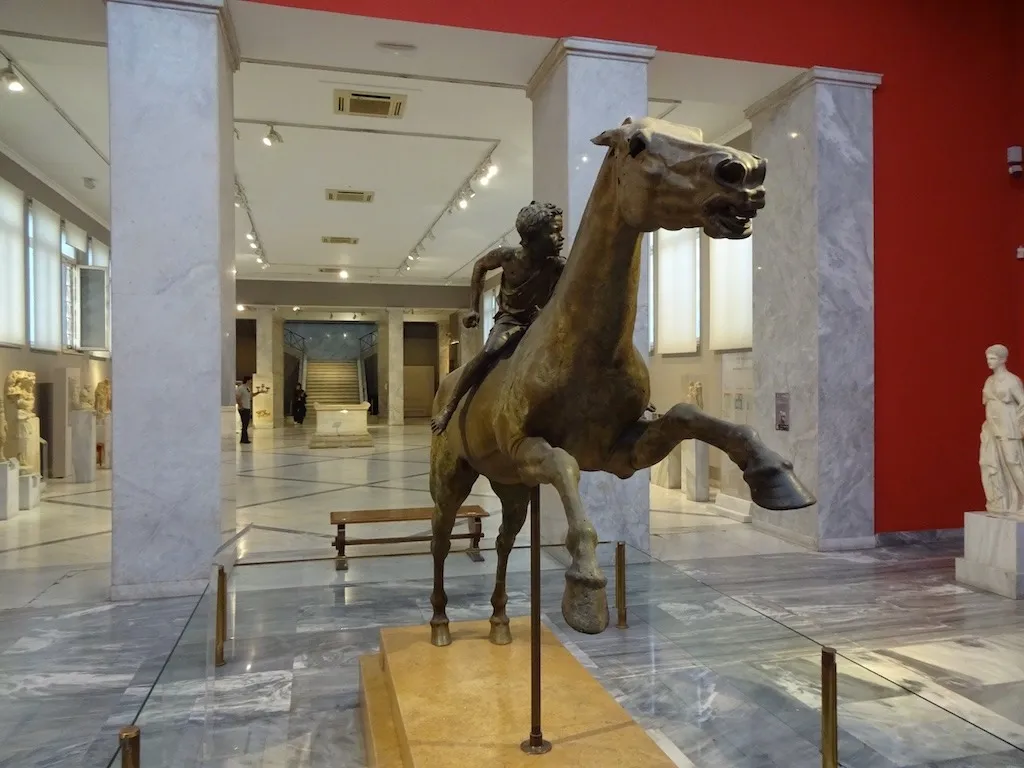
The world’s first computer
My favourite treasure in the museum was the Antikythera Mechanism, a marvel of ancient engineering. Recovered from a shipwreck near Antikythera, this complex mechanical device features interlocking bronze dial and cogs and was probably used as a celestial calculator and calendar. It was designed and built around 100 BC and rewrites the history of computing. I almost passed it by, too, due to the minimal signage! Thank goodness I didn’t.
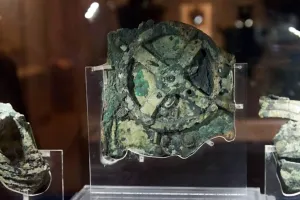
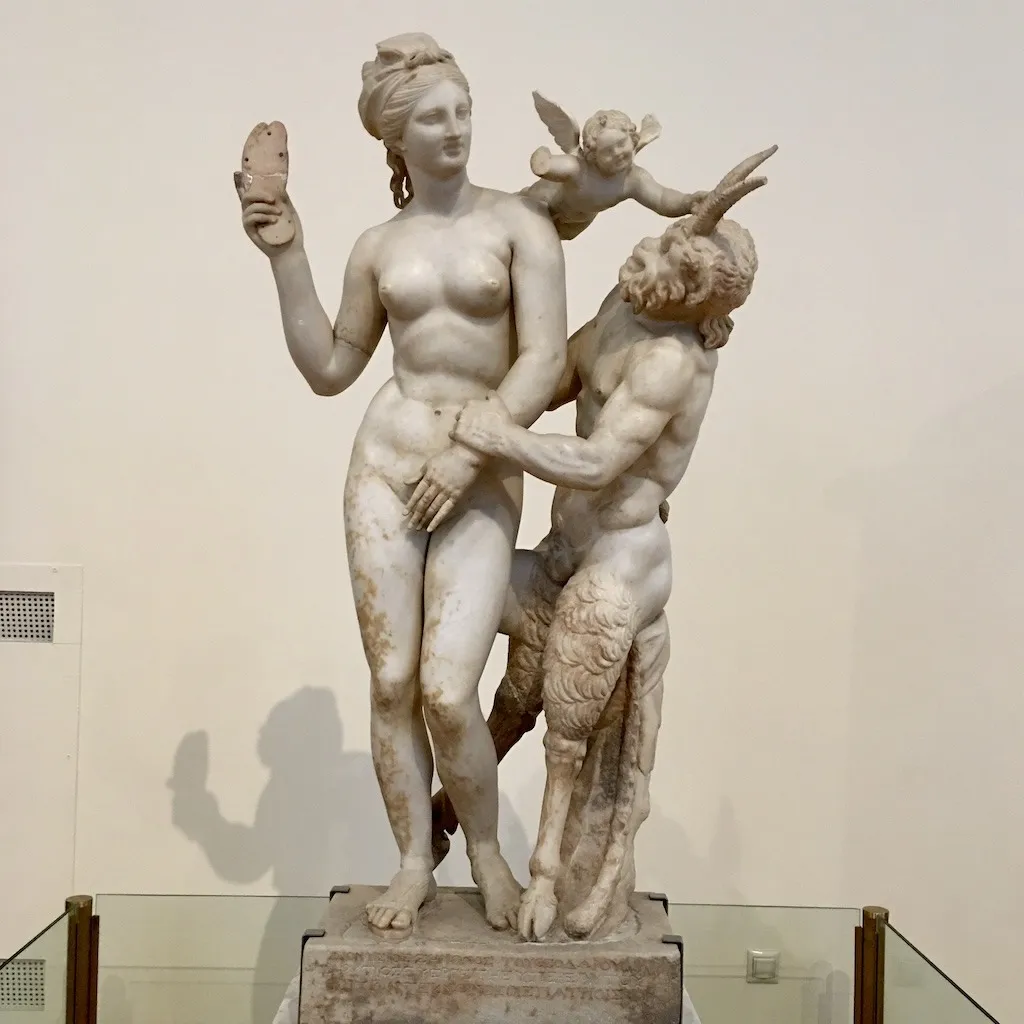
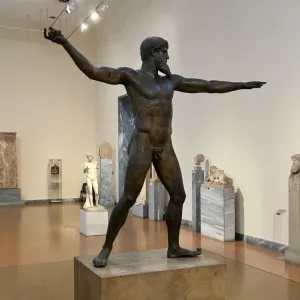
Other treats included a statue of Aphrodite, Pan and Eros, as well as a bronze of Zeus throwing a spear or thunderbolt. Both fizzed with energy and seemed to be imbued with life.
Food and drink in Athens
Frankly, if I had to live for the remainder of my years eating nothing but Greek cheese pies I’d not complain. They’re available all over the city, along with their spinach-filled cousins, and they’re savoury pastry perfection. Cheap, too! What’s not to like?
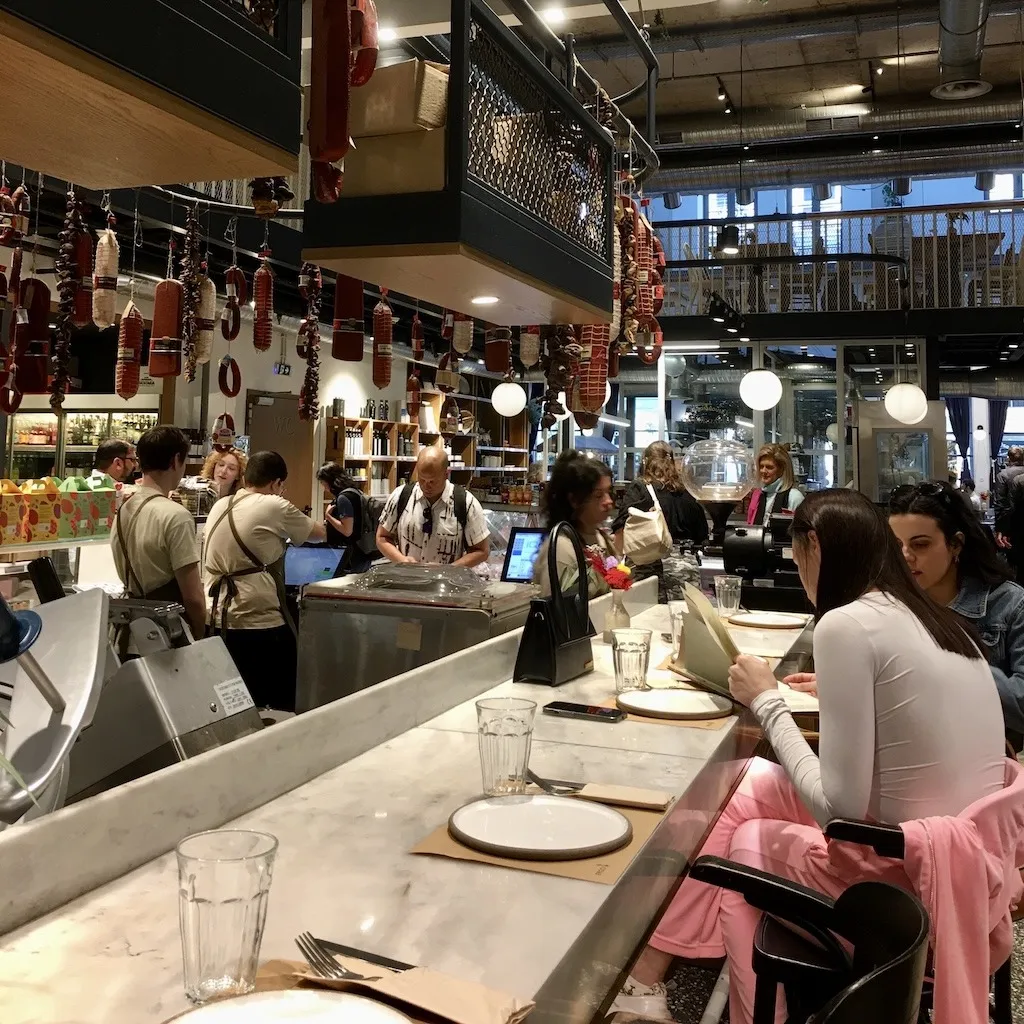
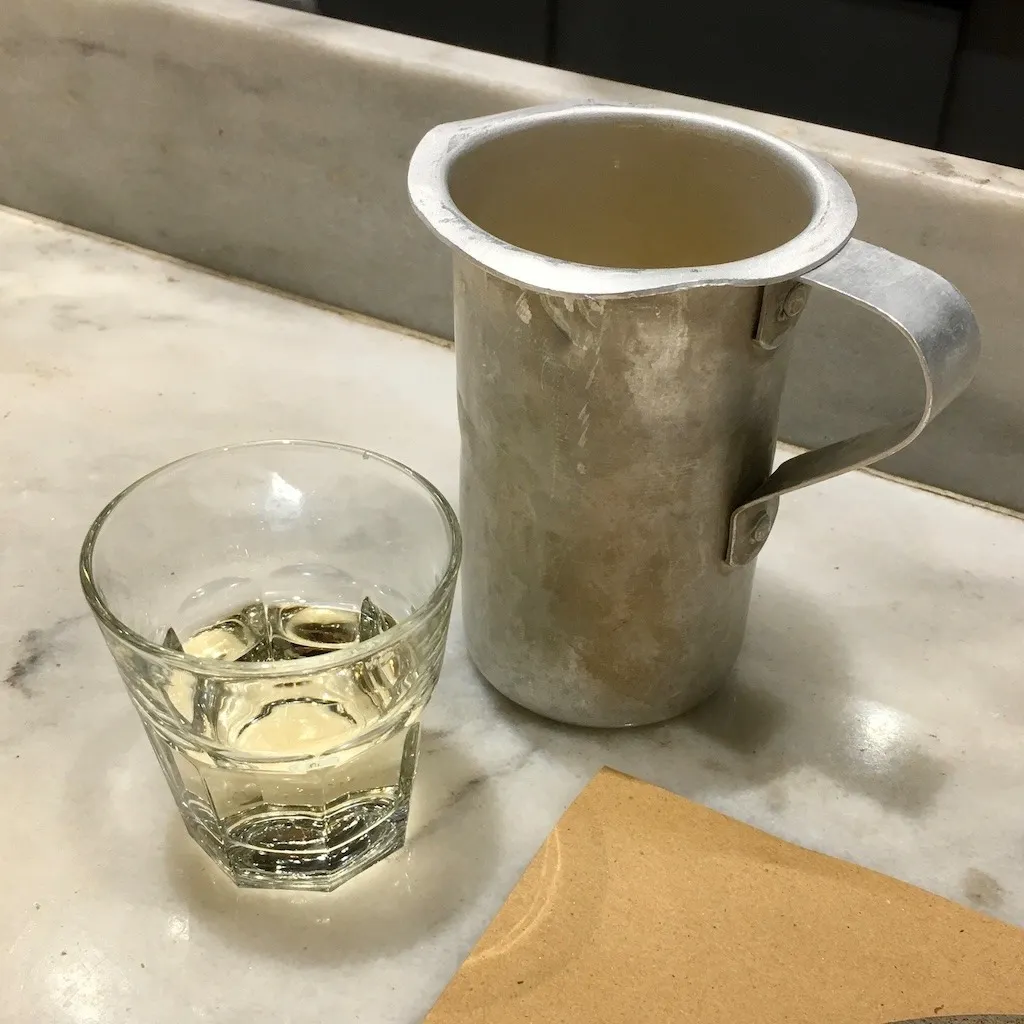
However, if you’re after something that’s a bit more sophisticated then head on over to Ergon House. This deli, bar, restaurant, shop and hotel – all rolled into one – is simply fantastic. I should probably have tried the rooftop bar (who doesn’t love a rooftop bar?) but instead opted for a spot alongside the deli counter. My baked aubergine was really tasty and the wine – which came in an old school metal jug – was excellent.
I’d probably stay there on my next visit to Athens; it really was that good. Go and try it out for yourself. Sadly, yet again, my three-day break was coming to a close. But what a break! I won’t be waiting another four decades before going back, that’s for sure.

